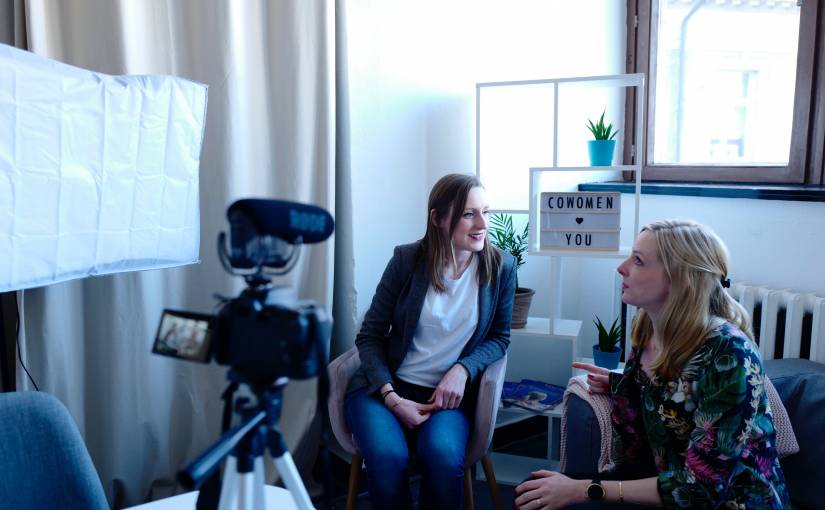You’ve seen the posts telling you that you need more video content, and they’re right. YouTube has over one billion users — almost one-third of the total amount of internet users. Who wouldn’t want to tap into an audience that big? Also, video can help you increase conversions, and it may even improve your chances of getting featured on page one of Google. Here are seven types of video that will make an impact on your website.
What type of video content should you be creating?
Obviously, merely creating video content for the sake of it is a waste of time and money. Your video content should align with the broader goals of your website. That means streamlining your sales process, growing your traffic and rankings, and boosting conversions.
1. The 80% video.
This first video comes from marketing expert Marcus Sheridan, a.k.a., “The Sales Lion.” I’m sure you’ve heard of him. If you haven’t, I highly recommend you check him out. I love his idea for what he calls the “80% video.” This video is a powerful educational tool for your sales team. The idea is that you compile a list of the most common questions that customers ask on sales calls.
You make a video that addresses the top 80% of those questions. Now you have an amazing piece of time-saving content that you can send to prospects before you get on a sales call with them. Then, by the time you finally talk to them, they’ll be highly educated about your business, and you can get right to the important stuff.
2. Staff videos.
Ever get a twinge when you’re about to type your credit card details into an anonymous website? You’re not alone. Most people feel more comfortable when they know they’re dealing with a real business run by real people, and not some fly-by-night operation. The answer? Staff videos.
Create videos featuring key team members talking about their jobs, their hobbies, their families — whatever they like. The key is to represent them as the charming, quirky individuals that they are. When your customers understand that friendly, accountable people run your business, they’ll have less hesitation about doing business with you.
Expertise, authority, and trustworthiness (EAT) are also factors that Google considers when assigning rankings. If you don’t provide details on your team and your contributors, then it limits Google’s ability to assess your EAT.
It is in Google’s interest to provide their users with search results from legitimate companies and weed out anonymous shysters, so try and provide as much information as you can about who runs your company and what they’re about.
3. Social proof.
Social proof is the idea that people mimic the behavior of others. When it comes to making a purchase, people often look to friends, family members, or people they respect for advice. One of the most common forms of social proof is the testimonial. Most businesses use text-based testimonials on their site.
But if you can get a customer to give their testimonial on video, it brings an added layer of credibility. It’s true that some people are camera shy, but if you’ve done great work, then you shouldn’t have a problem getting customers to sing your praises on video. If you have relationships with thought leaders, influencers, or even celebrities, ask them for a video testimonial as well.
4. Conference and media appearances.
Ever given a talk to a few thousand people at an industry event? If someone caught it on video, get it up on your website. The same goes for media appearances. If you’ve been on cable news or a major TV station, including the clip on your website can result in a considerable boost to your credibility.
You can do the same with podcast appearances. Instead of embedding a whole, hour-long episode, ask the podcast host if you can pull out a 1-2 minute segment and convert it into a video for your website. Like testimonials, media and conference appearances are a form of social proof that demonstrates your expertise and knowledge are sought-after commodities.
5. Linkbait and viral videos.
Acquiring links from other sites is the cornerstone of any serious SEO strategy. That means incorporating link-worthy content into your monthly editorial schedule should be a priority. When done well, viral videos are a great way to generate links and raise the profile of your brand.
You should also be repurposing content from successful articles, podcast episodes, and blog posts as video content to generate links and traffic. Start by researching your competitors with a tool like SEMrush to see what content on their sites attracts the most links, then develop a plan to create something better.
6. Product or service videos.
It’s important to have text descriptions of your products and services on your website for several reasons, including the fact that search engines can’t interpret video files. That said, videos can improve your user experience by giving a quick demonstration or visual explanation of how your product or service works.
Product videos can increase conversions and help you approximate the experience of visiting a brick-and-mortar store, which is essential as over half of shoppers say they would rather purchase in person than online.
7. Landing Page Videos.
When you drive traffic to a landing page via a big campaign, you’re usually looking to convert as many people as possible. Depending on the type of campaign, there may be many people who are unfamiliar with your brand. What better way to build trust and guide them to take action than with a video?
Use landing page videos to quickly explain what will happen when someone fills out your form and alleviate the most common concerns that people may have. Does it work? Well, according to some studies, adding a video on a landing page can increase conversions by up to 80%.
There’s no avoiding the fact that video is taking over. The key is to be strategic in how you use video content on your website. Instead of creating a video for the sake of it — focus on increasing conversions, building authority, and boosting traffic.










